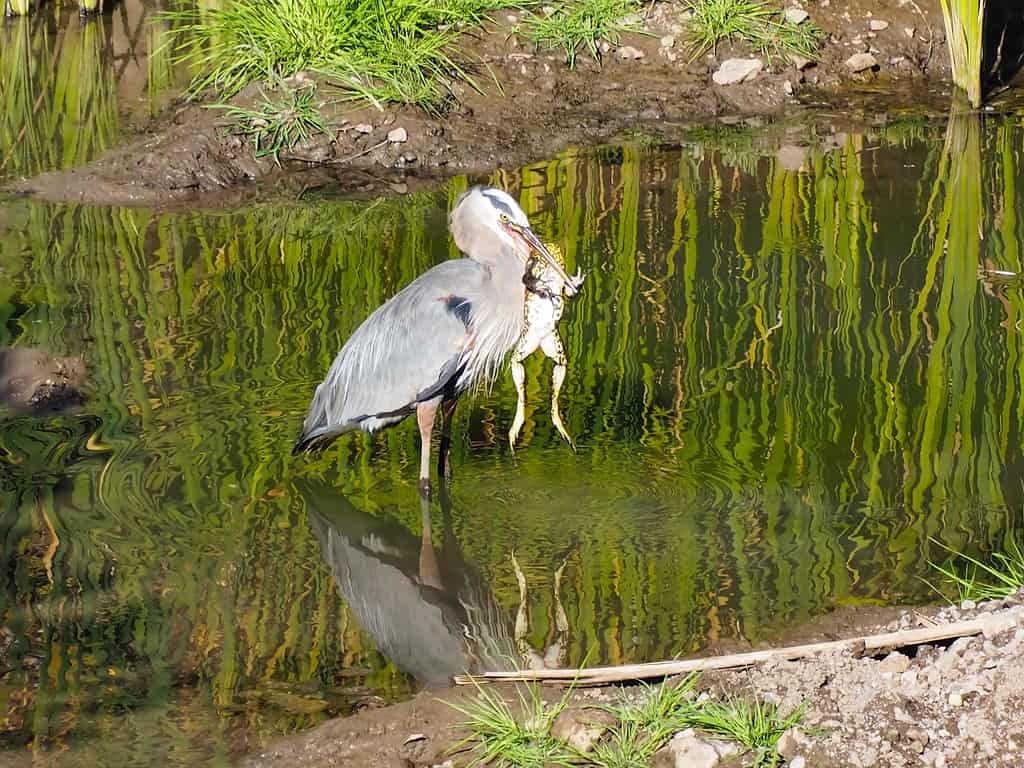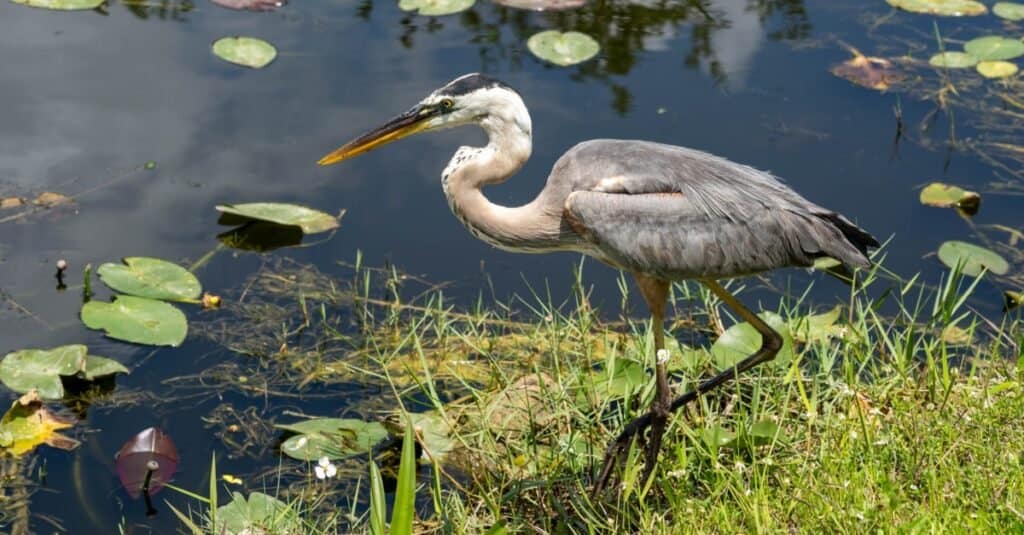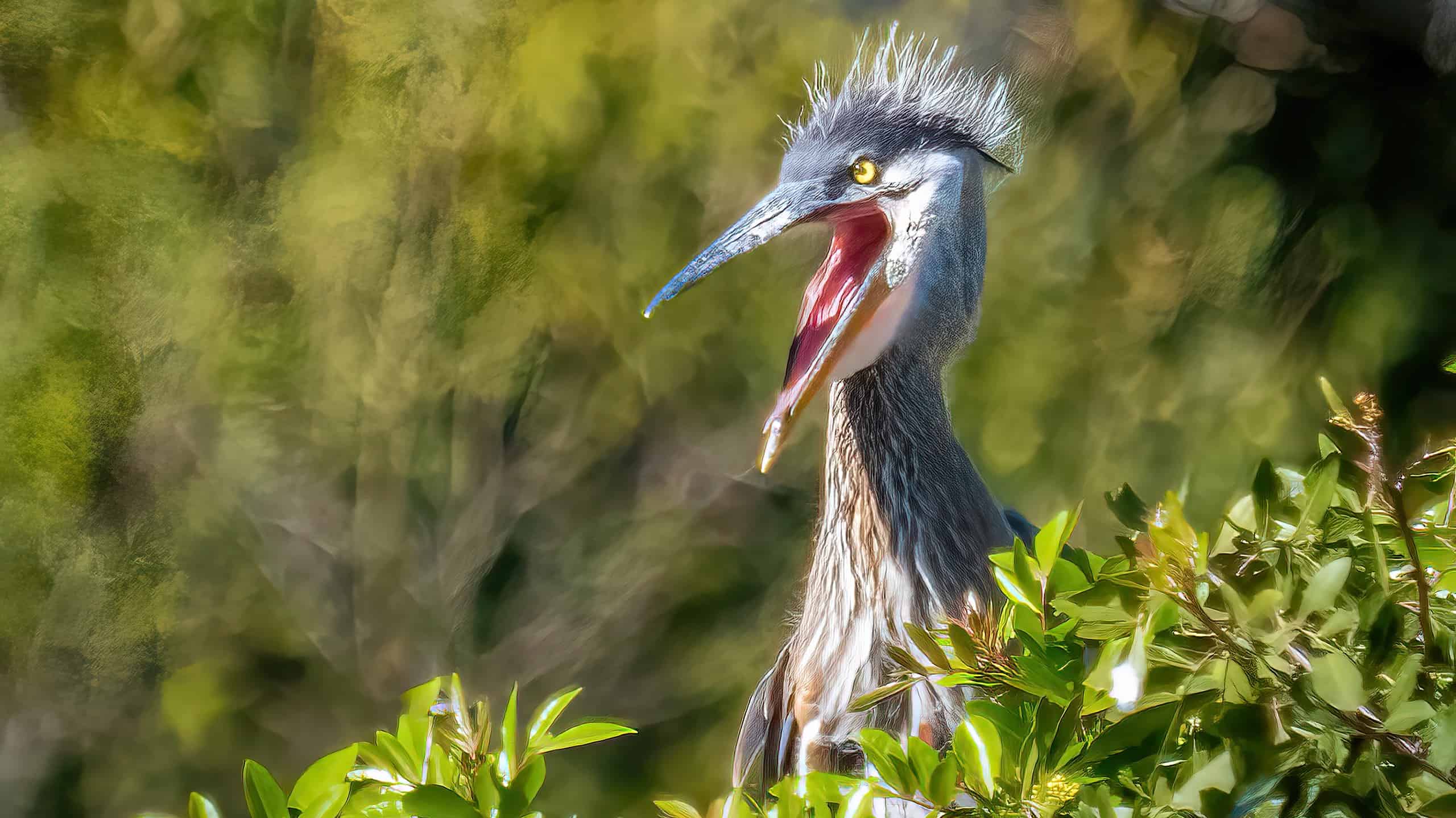This bird is absolutely ravenous! Watch below as a huge heron makes a quick meal out of a juicy frog.
The clip begins by showing the heron bobbing its head as it is trying to gulp down a humongous frog. The frog is so big, that it is almost the same size as the heron’s beak! The heron continues to toss the frog around in its mouth, attempting to get a better grip on the prey.
Watch the Heron Eat!
Eventually, the heron can get more of the frog in its mouth, yet it still struggles to swallow the whole animal. With one final movement, the heron gobbles down the whole frog. The frog’s feet can be wriggling around through the heron’s closed bill.
With a huge gulp, the huge bird fully swallows the frog. The clip ends showing the heron digging around in some nearby water, happy with his successful meal!
What Do Herons Eat?

Herons are voracious predators. As aquatic birds, they commonly eat animals such as fish, snakes, and even frogs!
©iStock.com/jodiofca
As aquatic birds, herons can have pretty unique and diverse diets in comparison to terrestrial animals. They have an incredibly specialized bill, which allows them to successfully hunt for small aquatic critters like fish and crustaceans.
Like most birds, as long as an animal can fit in their bill, it is on the menu!
To hunt, herons will normally survey an area of water, using their high-powered eyes to seek out fish and other small prey. When they find something that looks rather tasty, they will spring into action, quickly spearing it with their incredibly sharp bill. In the case of extremely small prey, some herons will simply scoop up the animal and swallow it in one quick action!
In addition to frogs, such as the one shown in the video below, they have been known to eat a lot of other strange and even dangerous food. For instance, they are many stories of herons eating animals such as rats and even snakes!
Some of their most common meals include:
- Small fish
- Crustaceans
- Crabs
- Prawns
- Frogs
- Toads
- Worms
- Lizards
- Large insects
Why are Their Legs So Long?

The great heron’s long legs are a vital adaptation allowing them to wade while keeping their bodies dry and reducing the drag, increasing their wading speed.
©ttomasek15/Shutterstock.com
One defining characteristic of herons is their extremely long legs. Although it may seem like a strange trait to have, long legs are a vital adaptation that allows them to succeed in their natural environment.
Since they are waterbirds, herons have to wade around for the vast majority of the day. Having long legs presents two main advantages to this lifestyle. First, it allows them to stay relatively dry, which can prevent disease and thermoregulation issues.
In addition to this, their long and slender legs reduce their drag in the water, which increases their movement speed. This slight increase improves their ability to chase down and catch small prey in the water.
Interestingly enough, having log legs can pose a slight disadvantage to flying, as they can increase drag in the air and make it harder to take off. Herons are majorly waterbirds, so this disadvantage doesn’t affect them too much. In instances where they do have to fly, they will often tuck their legs into their body to reduce air drag!
Thank you for reading! Have some feedback for us? Contact the AZ Animals editorial team.








